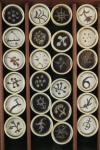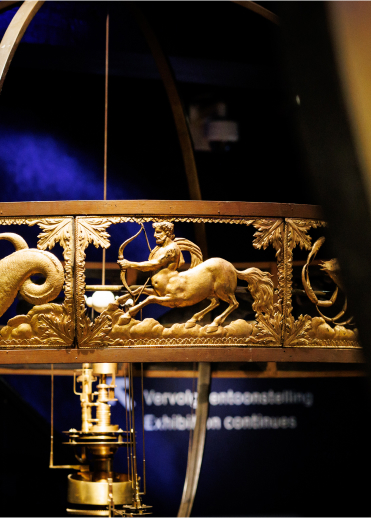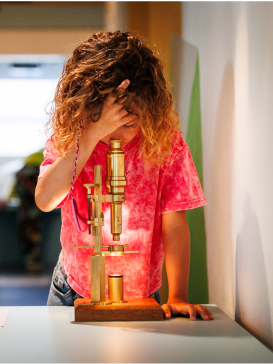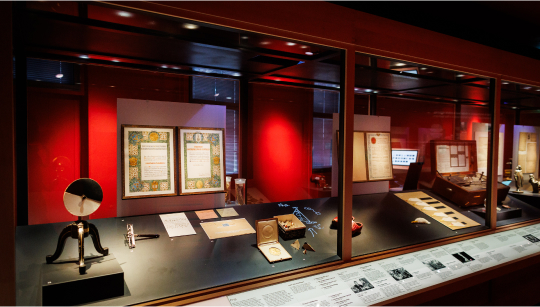The world in a cabinet
10 min
In the spring of 2022, Rijksmuseum Boerhaave received a very special cabinet. It is a small mahogany cupboard, filled with microscopic specimens neatly stored in drawers.
The tiny specimens, set in small bone rings, show carefully arranged seeds, beautifully inlaid seaweed, and shells. Although Rijksmuseum Boerhaave already owns three similar cabinets, all displayed in the museum because of their beauty and historical value, this new specimen cabinet is particularly unique. But who could afford such a refined cabinet with its contents around the year 1800?
Inspiration
The cabinet comes with a handwritten and signed catalog, which shows that Ypelaar is the maker of the specimens. Abraham Ypelaar, born in Amsterdam, developed a fascination for microscopy at a young age, inspired by the work of Antoni van Leeuwenhoek and Jan Swammerdam, two Dutch microscopists from the seventeenth century. Originally, Ypelaar was a diamond setter, but later he turned his hobby – preparing microscopic specimens – into a profession. Together with his nephew, he started a workshop for producing ready-made microscopic specimens.
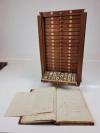
According to the accompanying handwritten catalog, this cabinet originally contained eight hundred round specimens, divided into nineteen drawers. Each specimen, set in a round bone ring, contained only one type of material. The specimens were carefully arranged based on their morphology, representing various aspects of the three kingdoms of nature.
Attention to detail
It is also interesting to note from the catalog that this cabinet was specially made for Nicolaas van Staphorst, a very wealthy Amsterdam merchant and member of the society Felix Meritis. He acquired the collection for 1,400 guilders, which would be nearly 14,000 euros today. As the owner of such a cabinet, Van Staphorst showed his interest in both science and art. The museum is very grateful to the donor of this magnificent piece.
